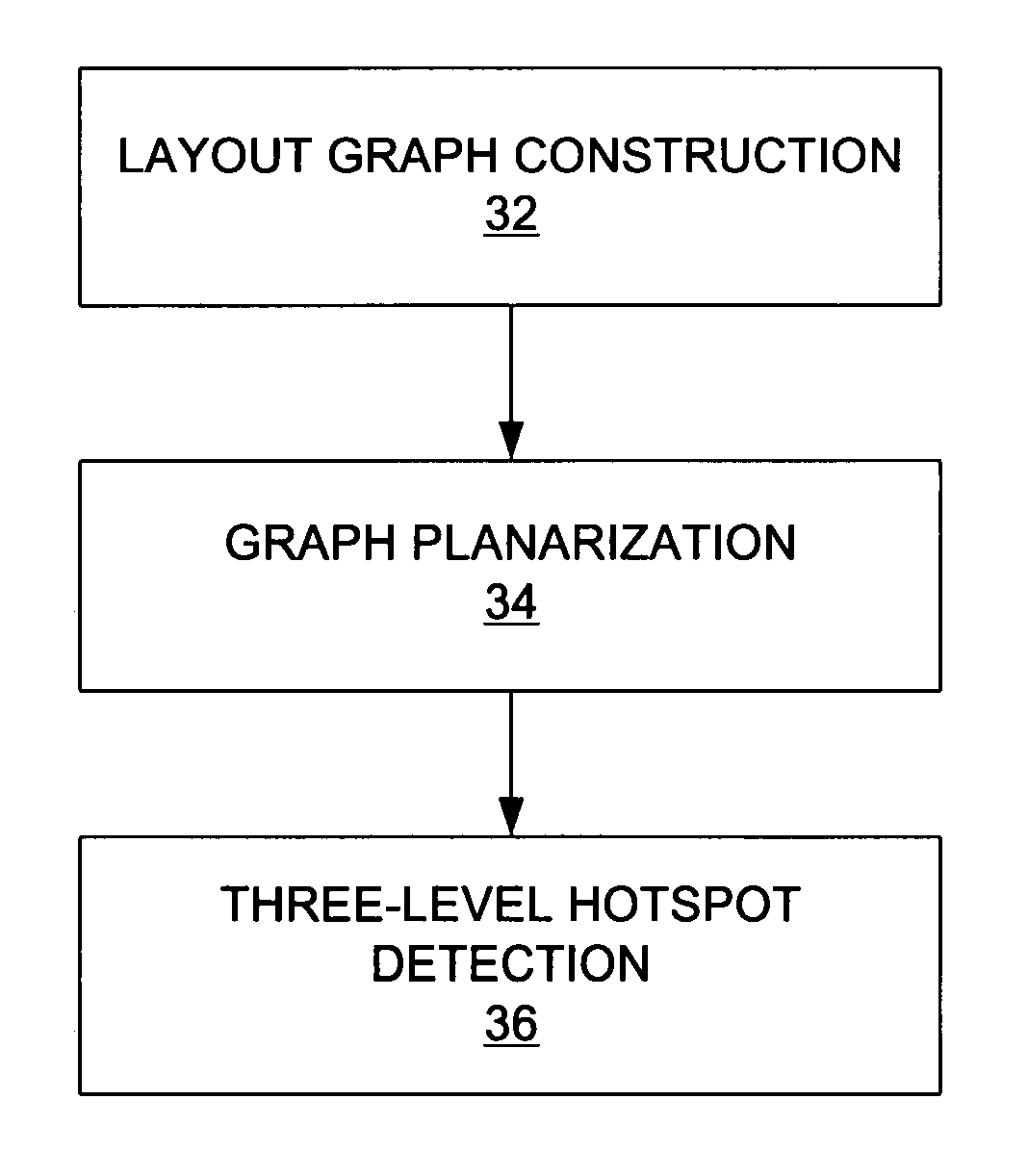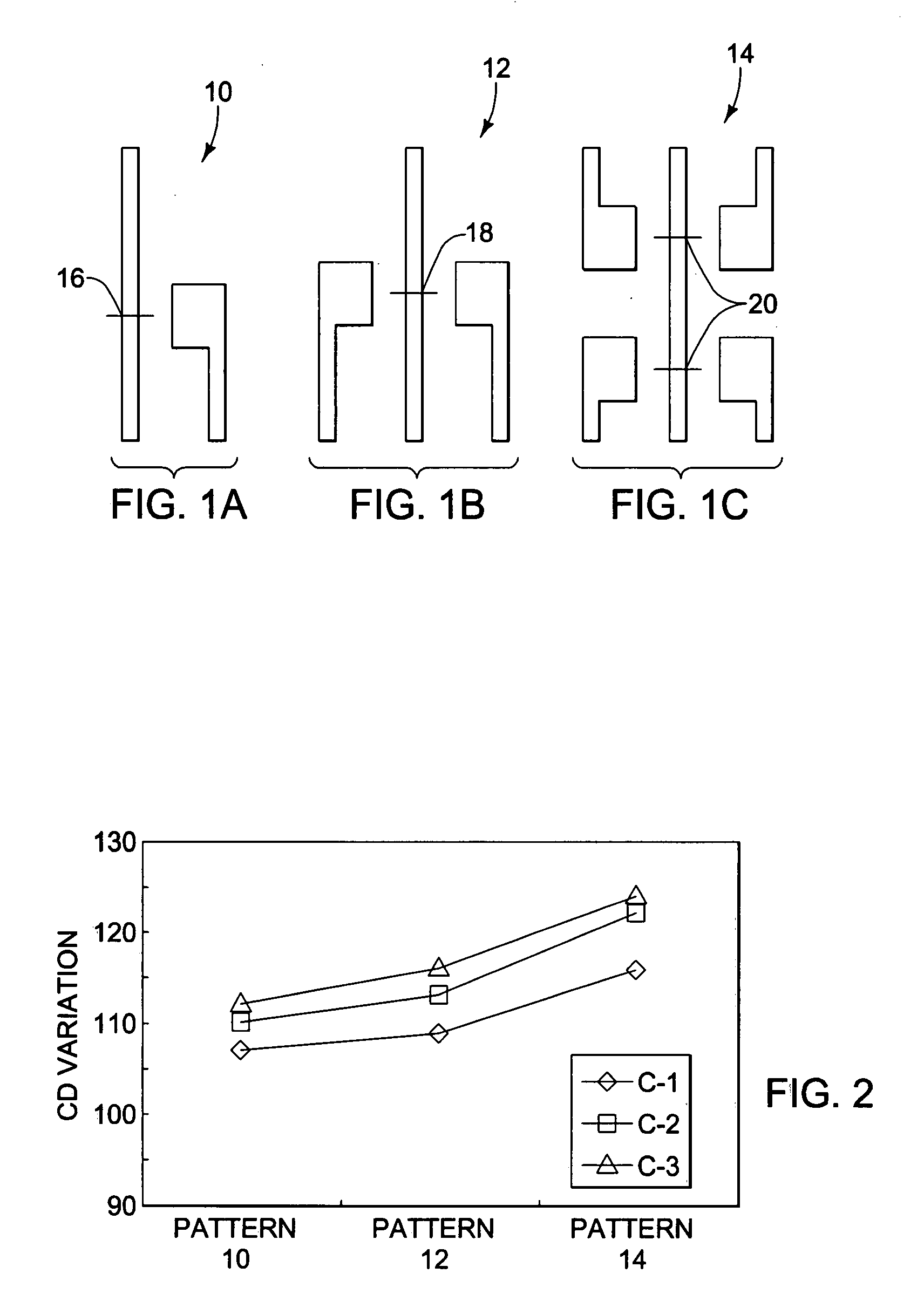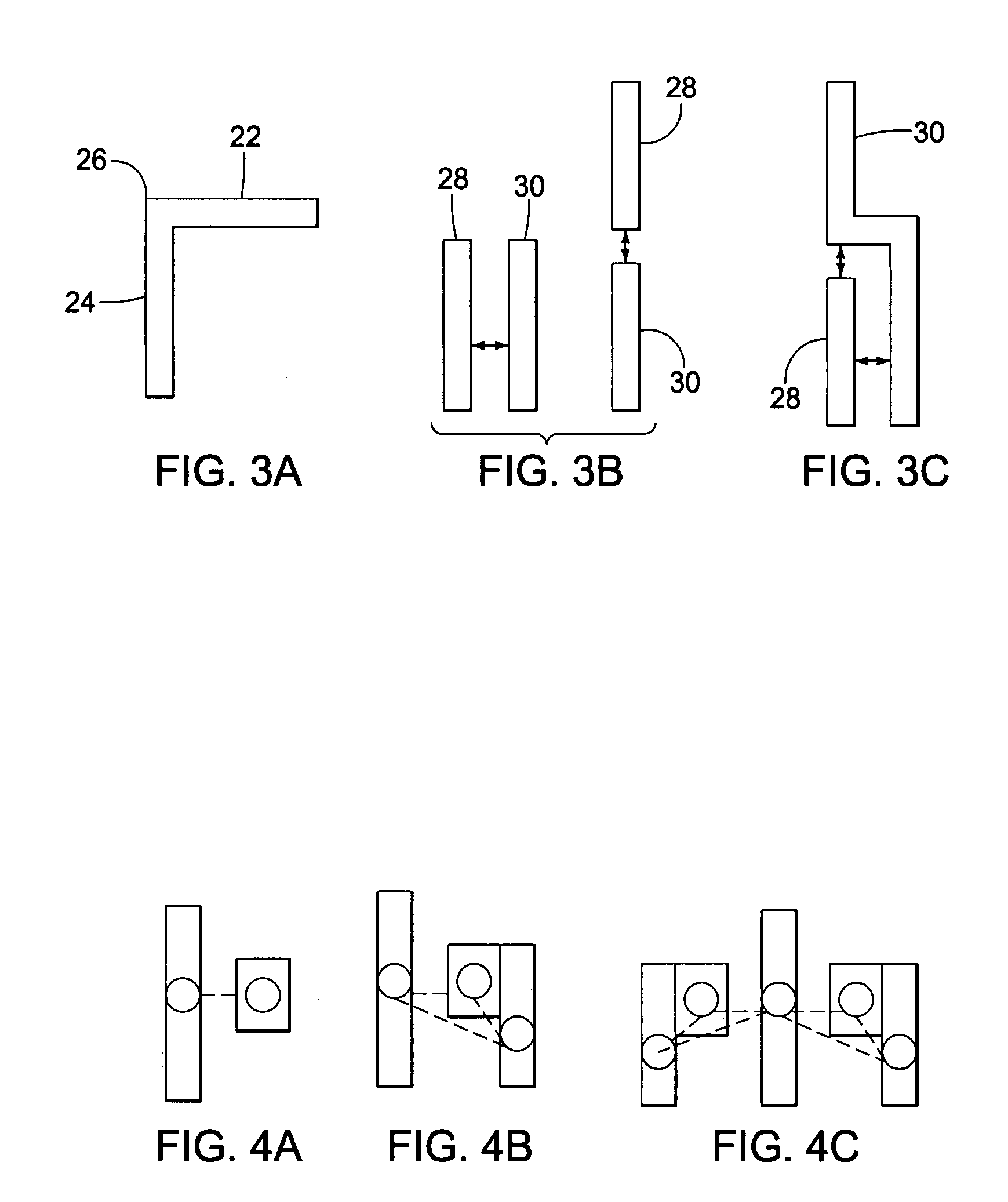Method and apparatus for detecting lithographic hotspots
- Summary
- Abstract
- Description
- Claims
- Application Information
AI Technical Summary
Problems solved by technology
Method used
Image
Examples
Embodiment Construction
[0018]Briefly, the present invention is directed to a detection method for hotspots induced by lithographic uncertainty. The hotspot detection method includes building a layout graph which reflects pattern-related critical dimension (CD) variation. Given a layout L, the layout graph G=(V, Ec ∪ Ep) consists of nodes V, corner edges Ec and proximity edges Ep between the nodes V. A face in the layout graph includes several close features and the edges between them. The weight given to the edges is calculated from a traditional 2-D model. Then a three-level hotspot detection is applied: (1) edge-level detection finds the hotspot caused by two close features or “L-shaped” features; (2) face-level detection finds the pattern-related hotspots which span several close features; and (3) merged-face-level detection finds hotspots with more complex patterns. To find the merged faces which capture the pattern-related hotspots, the layout is converted into a planar graph G. Then its dual graph G...
PUM
 Login to View More
Login to View More Abstract
Description
Claims
Application Information
 Login to View More
Login to View More - R&D
- Intellectual Property
- Life Sciences
- Materials
- Tech Scout
- Unparalleled Data Quality
- Higher Quality Content
- 60% Fewer Hallucinations
Browse by: Latest US Patents, China's latest patents, Technical Efficacy Thesaurus, Application Domain, Technology Topic, Popular Technical Reports.
© 2025 PatSnap. All rights reserved.Legal|Privacy policy|Modern Slavery Act Transparency Statement|Sitemap|About US| Contact US: help@patsnap.com



